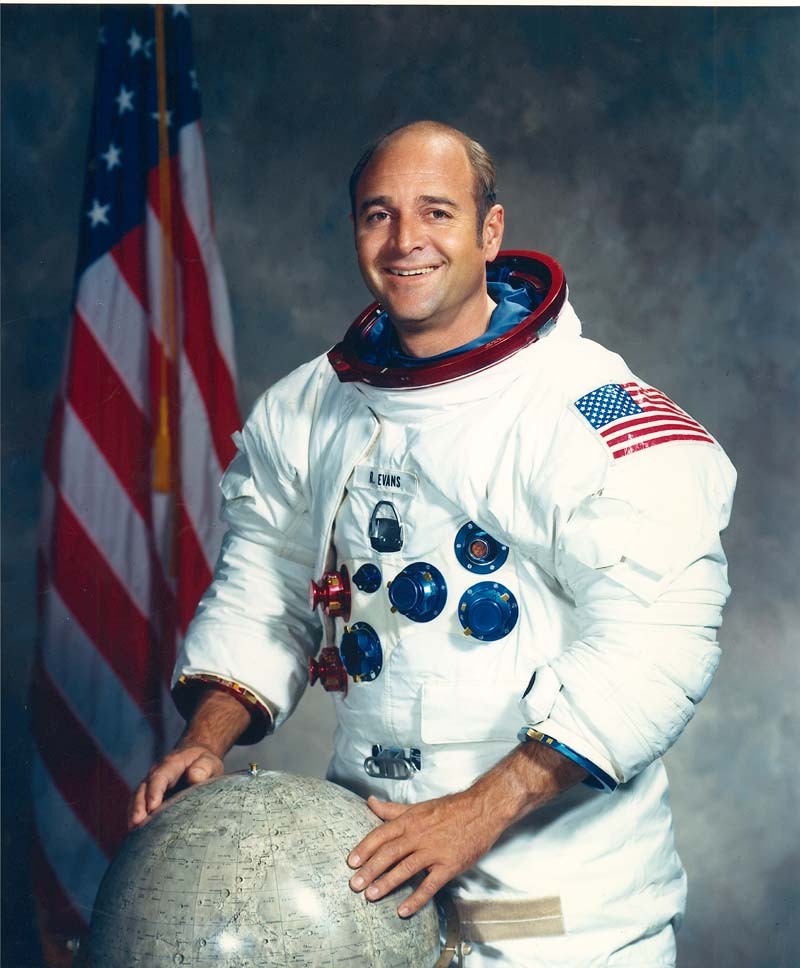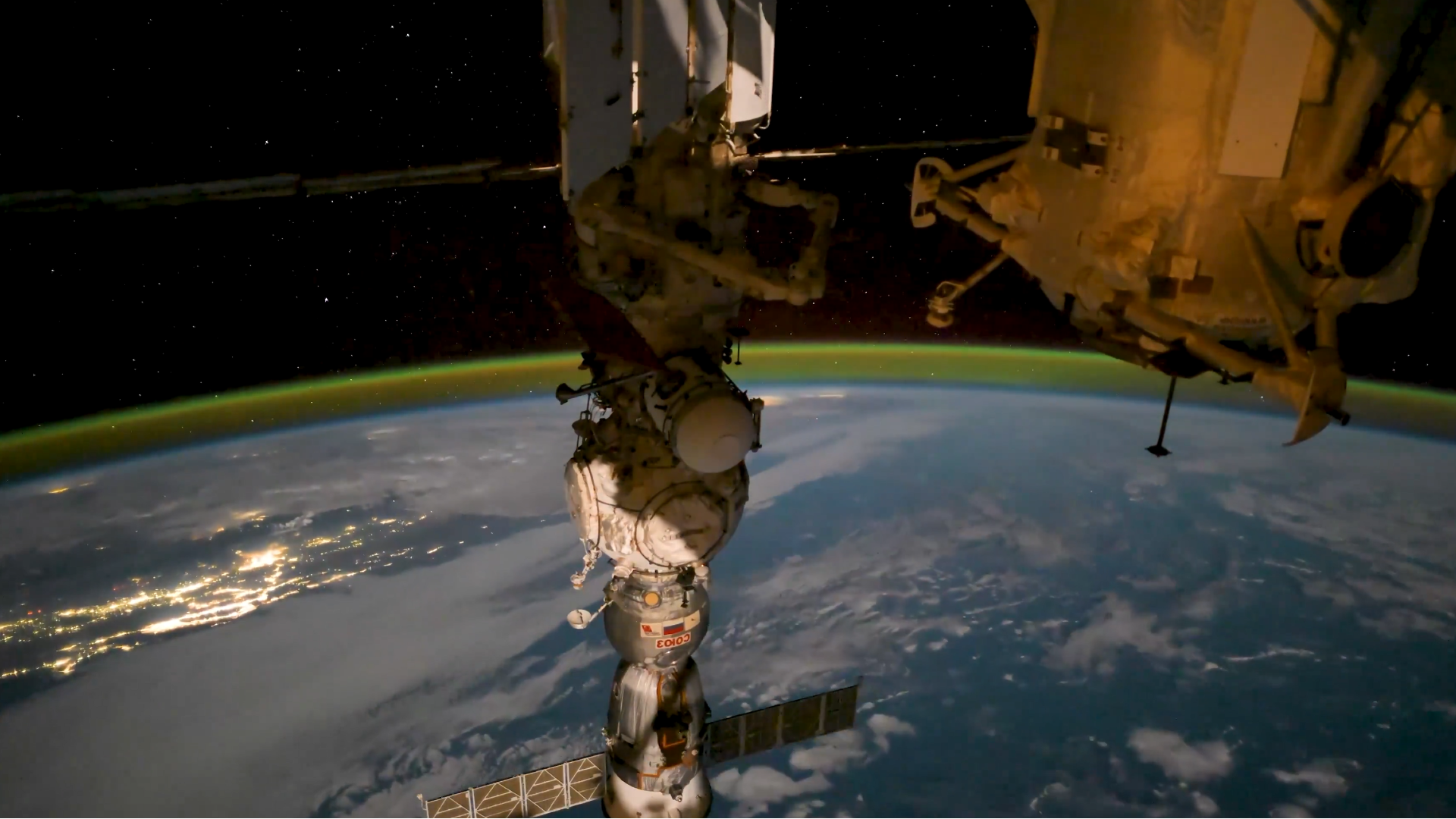Ron Evans: Apollo 17 Command Module Pilot
Ron Evans was a NASA astronaut whose only trip in space was a milestone: participating in the last Apollo crew to head to the moon.
Evans spent more time in lunar orbit than anyone else alive, according to NASA. While his crewmates worked on the surface, Evans observed geological features and took pictures from orbit. He also retrieved some equipment from the outside of the spacecraft on the journey home.
After retiring from NASA, Evans worked in private industry. He died of a heart attack in 1990.
Tail end of Apollo
Evans completed his flight training with the Navy in 1957, moving on to duties that included landing on aircraft carriers and teaching others combat flight techniques. He was, in fact, serving during the Vietnam War in 1966 when NASA contacted him to let him know that he'd been selected as an astronaut.
His first crew duty was a crew support member for the first Apollo mission, Apollo 7, in 1968. He repeated the duty for Apollo 11 – the first mission to land on the moon. Next, he was assigned as a backup command module pilot for Apollo 14.
When Evans was assigned to Apollo 17, the attention was immense on both Evans and his family, recalled his widow, Jan. Some of that attention was of a negative sort.
Breaking space news, the latest updates on rocket launches, skywatching events and more!
"There had been a threat by the Black September group that had wreaked havoc with the Olympics over in Germany," Jan Evans said in a 2003 interview with NASA.
"They had made a threat on the families of the 17 crew. So as it ended up, they left for quarantine, we had security out in front of our house 24 hours a day."
Scissors and a stink
Apollo 17 lifted off from Cape Canaveral on Dec. 7, 1972, commanded by Eugene Cernan and with Evans and Harrison "Jack" Schmitt on board.
During the flight to the moon, Evans found himself caught in somewhat of a crisis: he lost his scissors. Each crew member was assigned a pair, and they were crucial as Evans needed them to rip open food packets. He would be alone in orbit for days while his two crewmates were on the surface.
"I lost them – as soon as I got up the next morning, they weren't there," Evans said to the other men, as noted on transcripts of the mission's conversations.
The crew searched extensively for the scissors, but didn't find them in time. In the end, the two moon-bound men left a pair of their own scissors behind before leaving for surface exploration.
"We compromised our activities on the surface for the scissors," Schmitt joked later in the mission, saying half of Mission Control's mandate was to make sure they didn't lose the remaining pair. "The first [moonwalk], they fell out of the bag and they were laying there in the dirt."
Cernan added: "In the dirt, and had something covering them up."
Scissors didn't cover all of Evans' problems in orbit. "Man, I stink! Whew!" he radioed during his solo tour of the moon.
Evans, of course, spent most of his time focused on the serious matters of cataloging the moon's features that he could see from orbit. On the way back to Earth, Evans did a 1 hour 6 minute spacewalk where he took completed camera film from the outside of the spacecraft. This provided a record of his observations for geologists to pore over on Earth.
After the moon
The end of the Apollo 17 mission was a bittersweet moment for its crew. It was highly successful, but it also marked the last moon missions for the foreseeable future.
When the astronauts returned to their homes in Houston, families alongside them, the whole neighborhood came out to see them.
"Both sides of the street, all the way from the entrance into our cul-de-sac, was lined with flagpoles with the flag flying. That was just a bit overwhelming," Jan Evans recalled.
"That was something that the whole community decided to do, and all children in the community had been informed about it, or so I found out. There were people on horseback carrying flags, and any child that had a bicycle or tricycle had red, white, and blue decorated streamers and in their wheels and everything.
"Everybody felt a part of this program and a part of this community. They were proud."
After Apollo's completion, Evans remained with NASA as a backup command module pilot for the Apollo-Soyuz Test Project mission. This was the first joint American-Soviet mission and was an early precursor of later agreements to work together on Mir and the International Space Station.
Evans also assisted with the shuttle's development, particularly focusing on the launch and first few minutes of the mission.
After retiring from NASA in 1977, Evans moved into the coal industry. He died, however, from a heart attack in 1990 at the age of just 56.
— Elizabeth Howell, SPACE.com Contributor

Elizabeth Howell (she/her), Ph.D., was a staff writer in the spaceflight channel between 2022 and 2024 specializing in Canadian space news. She was contributing writer for Space.com for 10 years from 2012 to 2024. Elizabeth's reporting includes multiple exclusives with the White House, leading world coverage about a lost-and-found space tomato on the International Space Station, witnessing five human spaceflight launches on two continents, flying parabolic, working inside a spacesuit, and participating in a simulated Mars mission. Her latest book, "Why Am I Taller?" (ECW Press, 2022) is co-written with astronaut Dave Williams.


